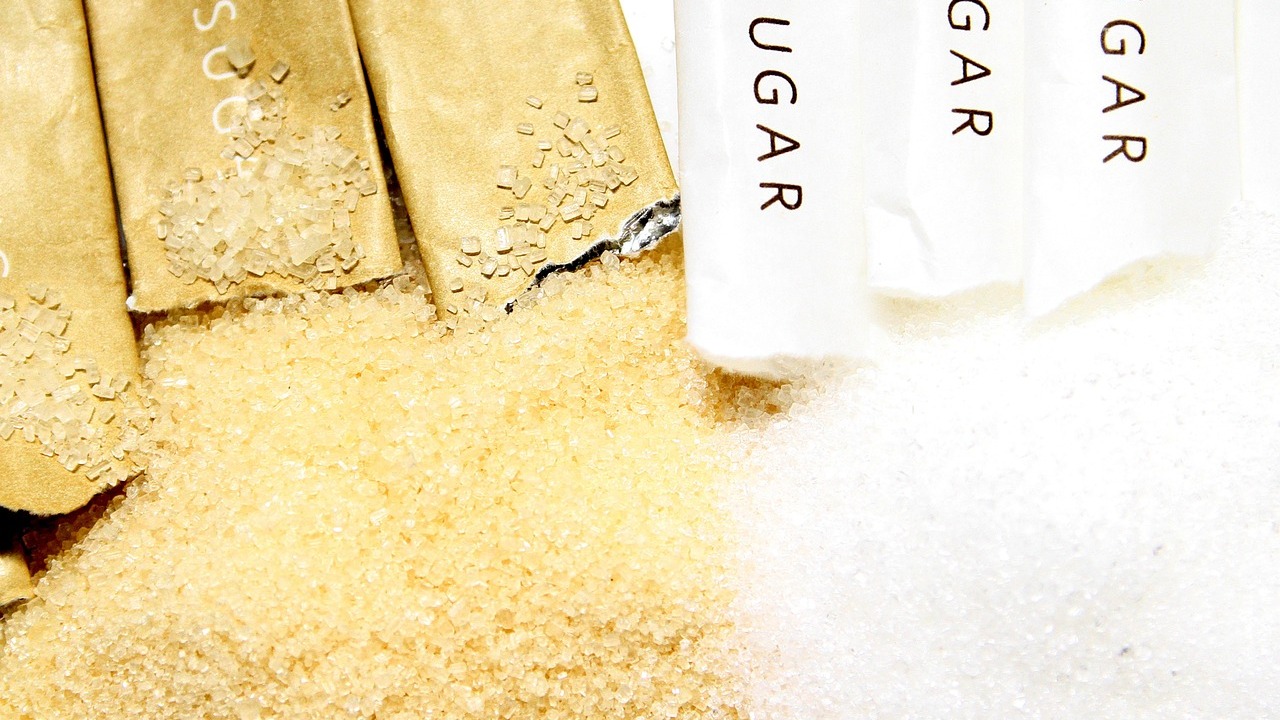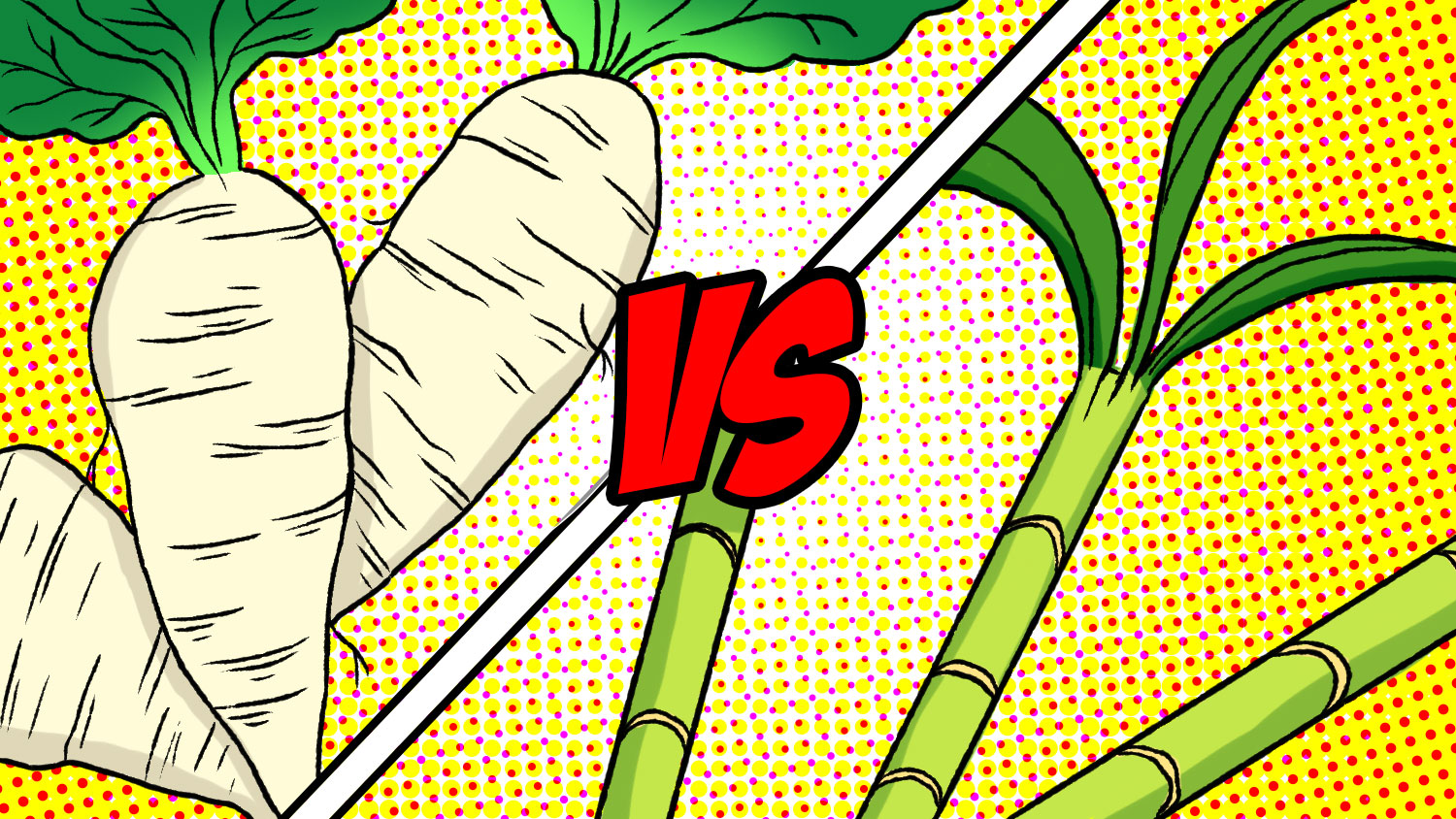How feasible is it to intercrop Sugar beet vs sugar cane?
Wiki Article
Everything About Sugar Beet Vs Sugar Cane: Which One Uses Greater Benefits and Uses?
The comparison between sugar beet and sugar cane provides a nuanced exploration of their corresponding benefits and applications. Each plant has distinct nutritional accounts and growing conditions that influence their use in various markets. As customer preferences shift in the direction of healthier choices, the significance of these 2 sources of sugar ends up being progressively considerable. Recognizing their differences can disclose insights right into which might inevitably offer better in an altering market landscape. What aspects will shape this ongoing discussion?Review of Sugar Beet and Sugar Cane
Sugar beet and sugar cane are two main resources of sugar, each with distinctive features and advantages. Sugar beet, a root crop mostly expanded in warm climates, is recognized for its high sucrose web content, which can vary from 15% to 20%. This plant is typically refined into granulated sugar, molasses, and other by-products. Its growing enables a much shorter expanding season and much less reliance on tropical climates.In comparison, sugar cane prospers in warmer, exotic areas and is frequently concerned for its fibrous stalks, which can generate 10% to 15% sucrose. The processing of sugar cane not only produces sugar yet additionally causes products like rum and ethanol, making it functional. Both plants contribute considerably to the international sugar market, with their distinct growing conditions and handling techniques influencing their agricultural and economic value. Inevitably, the selection in between sugar beet and sugar cane commonly relies on regional environments and market needs.
Nutritional Profiles: Sugar Beet Vs Sugar Cane
The dietary profiles of sugar beet and sugar cane reveal considerable distinctions in their nutrient structures. Sugar beet has a tendency to provide a higher focus of nutrients, while sugar cane primarily provides energy in the kind of carbohydrates. In addition, the glycemic index of these two resources varies, impacting their effects on blood sugar level levels.Nutrient Structure Comparison
When comparing the nutrient make-up of sugar beet and sugar cane, distinct distinctions emerge that can influence dietary options. Sugar beets are known for their higher fiber content, offering around 2 grams of fiber per 100 grams, while sugar cane has marginal fiber (Sugar beet vs sugar cane). Pertaining to vitamins, sugar beets use an array of B vitamins, particularly folate, which sustains cellular health, whereas sugar cane includes fewer vitamins on the whole. Furthermore, sugar beetroots flaunt a higher mineral content, including potassium and magnesium, important for different bodily functions. Sugar cane largely gives carbs, especially sucrose, yet lacks the nutrient thickness located in sugar beets. These distinctions highlight the dietary advantages of sugar beets contrasted to sugar cane in a well balanced diet regimen
Glycemic Index Differences
How do sugar beetroots and sugar cane differ in their glycemic index, and what effects does this have for individuals monitoring their blood sugar level levels? Sugar beetroots usually have a reduced glycemic index (GI) contrasted to sugar cane, which indicates they cause a slower and a lot more gradual rise in blood sugar levels. This difference is specifically important for individuals with diabetic issues or those concerned regarding blood sugar administration. A reduced GI food can assist preserve steadier energy levels and lower the risk of insulin spikes. While both resources are primarily made up of sucrose, the differing fiber and nutrient material in sugar beets might add to their lower GI, making them a potentially much better option for health-conscious customers.Expanding Conditions and Geographical Distribution
Although both sugar beet and sugar cane act as important sources of sugar, their growing conditions and geographic distribution vary considerably. Sugar cane flourishes in exotic and subtropical environments, calling for warm temperature levels, abundant sunshine, and substantial rainfall. It is mostly cultivated in countries such as Brazil, India, and China, where these environmental aspects are excellent. Sugar beet vs sugar cane. In contrast, sugar beet prefers warm climates, growing in cooler areas with well-drained dirt. Major manufacturers of sugar beet consist of the United States, Russia, and a number of European nations, where the growing season aligns with cooler temperature levelsThe differences in environment demands result in differing farming practices; sugar cane is usually expanded as a seasonal plant, while sugar beet is typically grown every year. This geographical difference not just affects local farming economic climates however also forms neighborhood practices associated with sugar manufacturing and handling. Recognizing these factors is vital for examining the advantages and applications of each source.
Ecological Impact of Sugar Beet and Sugar Cane Manufacturing
While both sugar beet and sugar cane news add significantly to international sugar manufacturing, their environmental impacts vary significantly. Sugar cane cultivation typically requires huge areas of land and water, bring article about logging and environment loss in some regions. In addition, making use of fertilizers and pesticides in sugar cane farming can lead to dirt deterioration and water pollution. Conversely, sugar beet is usually expanded in cooler environments and calls for much less water, which may decrease the stress on local water resources. Nonetheless, intensive farming techniques related to sugar beet can additionally lead to dirt erosion and nutrient exhaustion. The processing of both plants produces waste, however sugar cane has a greater capacity for spin-offs, such as bioenergy, which can minimize some ecological influences. Inevitably, the sustainability of each plant largely relies on farming practices and regional management approaches employed throughout the production cycle.
Processing Methods and Performance
Processing approaches for sugar beet and sugar cane differ markedly, influencing general effectiveness and return. Sugar beetroots undertake a process that includes cleaning, cutting, and drawing out juice with diffusion or pressing. The juice is then purified, focused, and crystallized, resulting in granulated sugar. This technique is usually effective, with a high sugar extraction price.In comparison, sugar cane processing entails squashing the cane to remove juice, adhered to by clarification and evaporation. The juice is then boiled to generate sugar crystals. While both techniques work, sugar cane processing can be much more labor-intensive and lengthy because of the bigger range of operations and the demand for a lot more considerable tools.
Additionally, sugar beet handling often leads to a higher sugar content per bunch contrasted to sugar cane, making it a much more efficient choice in particular areas. On the whole, the option of handling method affects not just the return yet also the financial feasibility of sugar production.
Applications in the Food Market
In the food market, sugar beet and sugar cane serve distinct duties in sweetener manufacturing. Each source supplies special qualities that affect their culinary applications, from baked goods to drinks. Understanding these differences can help manufacturers and cooks in choosing one discover this info here of the most appropriate ingredient for their requirements.Sugar Production Distinctions
Although both sugar beet and sugar cane work as important resources for sugar manufacturing, their applications in the food sector differ considerably. Sugar cane is mostly associated with creating raw sugar and molasses, which are extensively used in beverages, confections, and baked products. Its juice is additionally fermented to create rum. Alternatively, sugar beet is generally refined into refined sugar, which is preferred in the manufacturing of granulated sugar and numerous other sweeteners. The extraction procedure for sugar beet is more simple, permitting higher yields of white sugar. Furthermore, sugar beet's convenience enables the development of alternate sweeteners, such as beet syrup. These differences highlight the distinct roles each source plays in satisfying the varied demands of the food industry.Culinary Utilizes Comparison
Cooking applications of sugar beet and sugar cane reveal distinct preferences amongst cooks and food makers. Sugar cane, frequently viewed as the standard sweetener, is favored in a range of products, consisting of syrups, molasses, and drinks like rum. Its all-natural taste matches desserts, marinates, and sauces. Alternatively, sugar beet, made use of mainly in granulated sugar form, is regularly incorporated into baked goods, sweets, and processed foods. Its neutral taste account permits it to mix flawlessly into different recipes. Additionally, sugar beet is acquiring traction in organic and non-GMO markets, appealing to health-conscious consumers. Ultimately, the selection in between sugar beet and sugar cane pivots on certain cooking applications, flavor preferences, and market trends within the food sector.Wellness Considerations and Consumer Preferences
A growing number of customers are significantly conscious of the health implications linked with sugar sources, bring about a keen rate of interest in the benefits of sugar beet versus sugar cane. Both sugar resources have distinctive dietary profiles that might influence customer options. Sugar beetroots tend to have somewhat much more fiber and essential nutrients, which can interest health-conscious people. Conversely, sugar cane is frequently perceived as a more all-natural and less refined choice, possibly drawing in those seeking natural or raw items.Additionally, the climbing popularity of alternative sweeteners has actually motivated consumers to scrutinize standard sugars much more very closely. Understanding of too much sugar consumption's health and wellness risks, such as weight problems and diabetic issues, has actually sustained a demand for openness pertaining to the beginnings and processing approaches of sweeteners. Eventually, specific choices remain to form the debate between sugar beet and sugar cane, showing a more comprehensive trend towards much healthier eating practices and notified consumerism
Regularly Asked Questions
What Are the Historical Uses Sugar Beet and Sugar Cane?
Historically, sugar beet and sugar cane have actually offered as key sources of sugar. Sugar cane, grown for centuries in tropical areas, offered sweeteners, while sugar beet arised in Europe throughout the 18th century, enhancing local sugar production.

How Do Sugar Beet and Cane Affect Local Economies?
Sugar beet and sugar cane significantly impact local economies with job development, agricultural efficiency, and profession. Their farming cultivates country growth, sustains local businesses, and generates tax obligation earnings, inevitably boosting neighborhood sustainability and financial durability.Are There Any Type Of Cultural Importance Distinctions Between Sugar Beet and Cane?
Social significance ranges sugar beet and sugar cane. Sugar cane frequently represents tropical heritage and typical practices, while sugar beet is related to farming technology and industrialization, mirroring various local identifications and historical contexts in their manufacturing.What Are the Key Pests Affecting Sugar Beet and Sugar Cane?
The major bugs affecting sugar beet include aphids and origin maggots, while sugar cane deals with threats from borers and planthoppers. Both plants call for careful management to mitigate damage and assurance healthy and balanced yields.Exactly How Do Climate Changes Influence Sugar Beet and Sugar Cane Farming?
Climate modifications considerably influence sugar beet and sugar cane cultivation by altering development problems, moving pest populations, and impacting water schedule. These elements can decrease yields and affect general agricultural sustainability in impacted regions.Report this wiki page